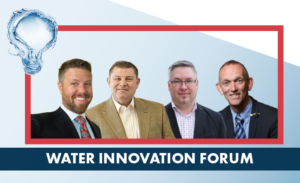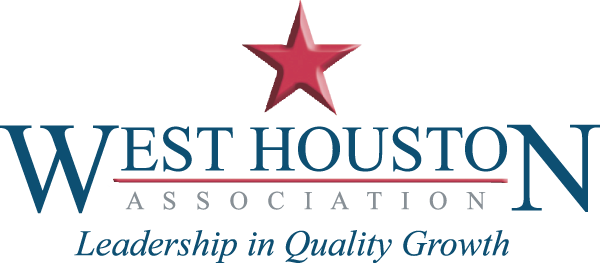By Lawanda Maxwell, MBA
Water is vital to Greater Houston’s continued growth, but in a climate that seems to get hotter and dryer each year, it may become a scarce resource in coming decades. Securing the region’s long-term water reserves through conservation and innovation was the topic of the West Houston Association’s “Water Innovation Forum” on April 29.
“Water is certainly something we all take for granted,” said moderator Todd Burrer, Inframark’s Vice President of Texas MUD’s . While all of the state’s urban areas, including Greater Houston, have seen major population growth in recent years, “we are not keeping up with the amount of water to provide people and the sources that it comes from.”
Rather than focus on the traditional methods of water storage and delivery, Burrer said it was time to look at more innovative methods.
Dr. Robert Mace, Executive Director of the Meadows Center for Water at Texas State University, said there were multiple ways to grow the water supply, from increasing wastewater reuse and rainwater harvesting, to more high-tech solutions like harvesting air conditioning condensate, seawater desalination, and aquifer storage and recovery.
While urban areas have spent decades building systems to carry water out of our cities, Mace says urban water management is increasingly focused on how to use that water as a resource. “Rather than trying to shed water and get rid of it as quickly as we can, we should probably capture it.”
For Houston, Mace believes condensate harvesting is a good option. He cited one building in Austin that is capturing 33 billion gallons of condensate off their air conditioning units every year, enough to meet all the building’s non-potable water needs. Aquifer storage, where treated surface water is held in underground reservoirs until needed, is another area for growth.
Claus Homann, COO and CSO of Aarhus Water, talked about projects in Denmark designed to reduce water consumption and increase energy efficiency. Denmark has ample groundwater reserves, but the country still believes in stewardship of natural resources and hopes to take the lessons they are learning to localities who need to increase conservation.
Bjorn Simundson of Molecule USA in California explained that his team started with the premise of decentralizing water production, thereby removing the need for fragile centralized sources like traditional reservoirs.
“The secret to the water problems is right above your head,” he said. “There’s actually seven times more water in the atmosphere than all the world’s rivers.” Even in an arid climate like California, there’s ample water in the air, if you can figure out how to collect it.
Molecule USA has devised a new material to replace traditional rotors on air conditioners. Not only does this material allow for more energy-efficient cooling, but it also provides a framework for an atmospheric water generator that works even in cold or arid environments.
“What it would allow you to do in a housing development community, or your own home or ranch, is to generate your own water on demand,” he said.
A major roadblock in water innovation is the state and federal government, where burdensome planning and permitting regulations tend to snuff out promising ideas. “I find that the technology moves faster than the legislature can handle it,” said Burrer.
He hopes in the future that “we can inspire our leaders to say, ‘Oh, you know what, there’s actually new opportunities out there. Why don’t we invest in those?’ I think you’ll see an amazing amount of innovation come out of it.”
 About the Author
About the Author
Lawanda Maxwell, MBA has ten years of experience in business marketing and is the Communications Manager of the West Houston Association, She oversees branding/messaging, marketing projects/sub-committees, and all external communications. She has a passion for education and community-based initiatives and infuses the two as an adjunct professor. Maxwell leads WHA’s efforts on its websites, blog, social media, publications, public relations, and messaging and is an important contributor to WHA’s initiatives, events, and member engagement.
